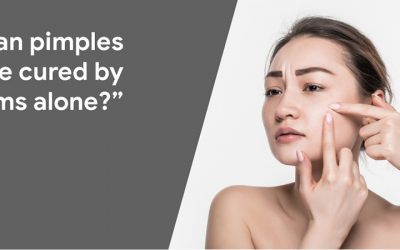Skincare Routine Steps: The Ultimate Guide
Introduction
Everybody has different skin, and therefore, everybody has different skin concerns, issues, objectives, etc. Some skin-routine rules generally apply around the board and are known as basics, and dermatologists have also confirmed these skincare routine steps. If you need more clarification on putting together a skincare routine or want to brush up on the basics, let’s go through the ultimate skincare routine steps.
All the basics need to be included in the given three steps: in the following order:
- Cleanser
The standard rule of thumb is cleansing your skin twice a day —in the morning and the evening — is perfect. Cleansing in the morning would help you remove all evidence of oil or sweat left from the hair and pillow during sleep.
However, cleansing skin in the evening should always be noticed and protected. In the end, it’s vital to cleanse and remove makeup or skincare products you have used in the morning and remove excess sweat, oil, pollutants, dead skin cells, and other waste collected on the skin during the day.
While selecting a facial cleanser, specialists say novices should go for a hydrating and gentle one as all skin types can bear a hydrating cleanser. Moreover, look for a fragrance-free facial cleanser with minimal ingredients to evade irritation, and it should have glycerin and ceramides to maintain and restore the skin barrier.
- Moisturize
After that, use a moisturizing product or a moisturizer. Experts typically recommend a fragrance-free and oil-free moisturizer as it will become well tolerated for all skin types, including sensitive and acne-prone.
Beyond all these parameters, it’s easy to use this step to simultaneously address particular skin problems by seeking a moisturizer formulated with extra ingredients that target specific requirements. The general listing of skincare ingredients is quite long and ever-changing, so let’s go through some top skincare ingredients to know because they relate to moisturizers:
- Ceramides – It is vital for overall skin health and skin-barrier strength and crucial for people with eczema or dry skin.
- Hyaluronic Acid – It plumps the skin and re-establishes the lost hydration.
- Vitamin C – It offers overall skin brightening and antioxidant protection.
If your skin is acne-prone or oily, you can’t avoid everyday moisturizer use.
Though, those having oily skin need to look for non-comedogenic moisturizers. The term non-comedogenic on the product label indicates that ingredients would not block the pores and result in further breakouts.
- Protect
Sunscreen should be your initial protection and defense against skin cancer. If you don’t have the time to do anything for your skin, you should at least follow sun protection.
Use sunscreen with 30 or higher SPF and consistently apply that every day as a final step in the skincare routine.
When choosing the kind of sunscreen to use, you could pick from chemical and mineral based sunscreens. Mineral-based sunscreens protect the sun rays from piercing the skin because of ingredients like titanium dioxide or zinc oxide. In contrast, chemical sunscreens protect your skin against all the UV rays by absorbing them, depending on elements like avobenzone or octocrylene.
Conclusion
Everybody has different skin and different skin problems. So, treat them accordingly. You can follow these skincare routine steps as they suit all skin types.














